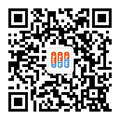Several international common certifications for walkie talkies
1、 What is the main certification for exporting walkie talkies to foreign countries?
Interphone products belong to wireless communication products. Exporting to European countries requires EU certification (CE), and exporting to North America requires FCC certification. Today, I will talk to you about foreign certification knowledge of intercom products.
2、 FCC certification required for entry into North America
Table of Frequency and RF Testing Standards for Various Interphone Systems in the United States

3、 CE certification for walkie talkies entering the European market
1. EMI Electromagnetic Disturbance
2. EMS electromagnetic immunity

North American certification mainly includes FCC certification and Canadian government certification. Mainly certified by FCC (Federal Communications Commission). The Federal Communications Commission of the United States has made clear requirements for electromagnetic compatibility (EMC), communication (TELECOM), radio frequency (RF), and other aspects of electronic and electrical products entering the US market. Interphones entering the North American market require obtaining FCC certification in order to smoothly enter the US market. The FCC certification of wireless communication products pays special attention to the provision of FCCID. The FCC reviews the samples (or photos) and test data submitted by the applicant, and authorizes the device with an FCCID number if it meets the requirements of the rules (products with RF must apply for FCCID).
3、 CE certification for walkie talkies entering the European market
If walkie talkie products need to be sold in the EU market, they must pass CE certification. The main testing content includes RF (radio frequency), EMC (electromagnetic compatibility), Safety (safety regulations), and some frequency band products may involve SAR (specific absorption rate) testing. The following is mainly about the testing items of electromagnetic compatibility. Currently, common analog walkie talkies on the market generally use FM modulation, The operating frequencies are over 100 MHz and over 400 MHz, with a maximum power of approximately 5W.
The EMC testing in the CE certification of analog walkie talkies adopts the EN 301489-5 standard and is mainly divided into two categories of testing.
1. EMI Electromagnetic Disturbance
1.1 Radiated emission
1.2 AC main input/output port conducted disturbance
2. EMS electromagnetic immunity
2.1 RF electromagnetic field radiation immunity
2.2 Electrostatic discharge electrostatic immunity
2.3 Fast transients common mode electrical fast pulse immunity
2.4 RF common mode conducted immunity
2.5 Voltage dips and interruptions
2.6 surges, line to line and line to ground
 Table of Frequency and RF Testing Standards for Various Interphone Types in Europe/Australia
Table of Frequency and RF Testing Standards for Various Interphone Types in Europe/Australia

6、 What materials need to be prepared for authentication of walkie talkies


4、 Thailand NBTC certification for walkie talkie
What is NBTC certification?
NBTC certification is a wireless certification in Thailand. The National Broadcasting and Telecommunications Commission, also known as NBTC, is a national institution under the Ministry of Industry. The management body of NTC is the Industrial Product Standards Committee, responsible for formulating all relevant laws and regulations for RF/Telecom in Thailand, setting the priority of standards, selecting qualified candidates for technical committee members, reviewing applications and issuing licenses according to the certification plan.
File requirements for NBTC certification of walkie talkies:
(1). Product Spec
(2). RF test report
(3). Safety test report
(4). SAR test report ((if product has 5GHz band and output power >100mW EIRP
or with 2/3/4G function)
(5). External photo with six sizes and internal photo
(6). User Manual
Information required for NBTC certification of walkie talkies
(1). Application form filled out in Thai (we will arrange this part for you)
(2). Product technical documents (such as catalogs/brochures/photos and/or technical specifications and/or operation manuals/service manuals and/or circuit diagrams)
(3). Test reports (such as RF, EMF/SAR, safety test reports)
(4). Other relevant documents
5、 What certification marks are there besides CE and FCC
(1). IC mark: Canadian universal mark, basically consistent with the requirements of the United States.
(2). C-TICK logo: Australian certification applies to electronic appliances.
(3). BSMI logo: BSMI motor and electronic products, including electromagnetic compatibility and safety, from the Taiwan Ministry of Economic Affairs Commodity Inspection Bureau.
(4). TELEC logo: Japan Wireless Product Certification.
(5). SASO Mark: Saudi Arabian Standards Organization International Conformity Certification Mark
6、 What materials need to be prepared for authentication of walkie talkies
1. Application Form for Case Opening
2. 2 normal bulk prototypes (including accessories such as headphones, chargers, batteries, etc.)+2 continuous emission samples
3. Provide product information:
(1) Technical Specification, including the following:
A. Modulation: Working mode, such as FM, HFSS, DSSS, UNPS, GSM, CDMA, etc
B. Frequency: Please indicate the frequency range or detailed frequency points
C. Output Power
(2) User Manual (Word document of the manual)
(3) BOM (List of Key Components) PCB, wire, etc., UL File No. needs to be marked
4. Schematics
D. Circuit diagram: Component parameters should be indicated, and antennas should be marked
E. Component Location Map
5. The Block Diagram should have an antenna and indicate the transmission frequency at the antenna end.
6. Circuit Description, also known as Operational Description, describes the circuit schematic and block diagram in textual form.
7. If there are several frequencies in the frequency modulation method, please clearly write down how to adjust the frequency for the intercom test application certificate
7、 The general process of applying for certification (taking CE as an example)
(1). The relevant laboratory (hereinafter referred to as the laboratory) submits a preliminary application orally or in writing.
(2). Fill out the application form and send the prototype, application form, product manual, and technical documents to the laboratory together.
(3). Conduct product testing and review technical documents in the laboratory.
(4). Technical document review includes: a) whether the document is complete. b) Is the document written in the European Community language (English, German, or French). If the technical documents are incomplete or do not use the specified language, the laboratory will notify the applicant for improvement.
(5).If the test fails, the laboratory will promptly notify the applicant and allow them to make improvements to the product. So, until the test passes. The applicant should make changes to the technical information in the original application to reflect the actual situation after the changes.
(6). The laboratory shall provide the applicant with a product test report or technical document (TCF), as well as a CE conformity certificate (COC) and CE mark.
(7). The applicant signs a self declaration of CE guarantee and affixes the CE mark on the product.
Deep Light Standard has a strong team of technical experts and research teams, constantly keeping abreast of the latest developments and technical requirements in domestic and international certification, and can design optimal certification solutions for your products. The above is an introduction to the certification testing of walkie talkies in the Deep Light standard. If you have any needs in this regard, please feel free to contact us for consultation.
Recommended items
-

Introduction to FCC Fundamentals
Electronic communication products such as radio, television, satellites, telecommunications, and cables entering the US market require FCC certification. The full name of FCC is the Federal Communications Commission of the United States, which is an important government agency responsible for managing and authorizing the use of radio and electronic devices....View more -

Analysis of 6 FCC certification requirements for Citizens Broadband Radio Services
In 2015, the Federal Communications Commission approved a shared frequency commercial rule Citizens Broadband Radio Services communication system working in the 3.55GHz~3.7GHz band (3.5GHz band, a total of 150MHz band width). ...View more




